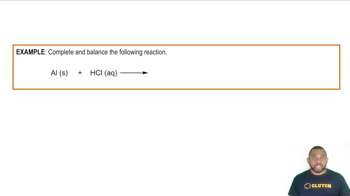Here are the essential concepts you must grasp in order to answer the question correctly.
Oxidation Number
The oxidation number, or oxidation state, is a value that represents the total number of electrons an atom either gains or loses when it forms a compound. It helps in understanding the electron transfer in redox reactions. For calcium, which is an alkaline earth metal, the oxidation number is typically +2 in compounds, indicating it loses two electrons.
Recommended video:
Electron Configuration
Electron configuration describes the distribution of electrons in an atom's orbitals. For calcium, the electron configuration is 1s² 2s² 2p⁶ 3s², indicating that it has two electrons in its outermost shell. This configuration is crucial for determining how calcium interacts chemically, particularly in forming compounds.
Recommended video:
Electron Configuration Example
Chemical Products
In a chemical reaction, products are the substances formed as a result of the reaction. The oxidation state and electron configuration of an element can change depending on the products formed. Understanding the nature of these products is essential for determining the final oxidation state and electron configuration of calcium in the context of the reaction.
Recommended video:
Production of Hydrogen Example




